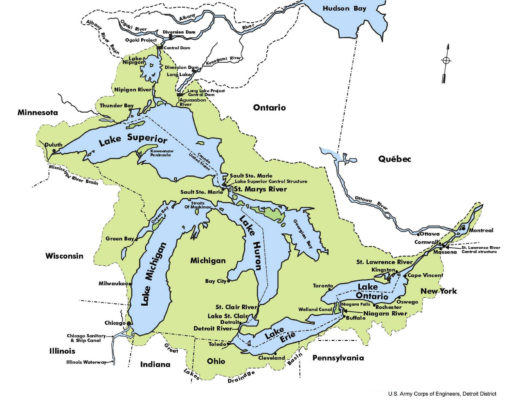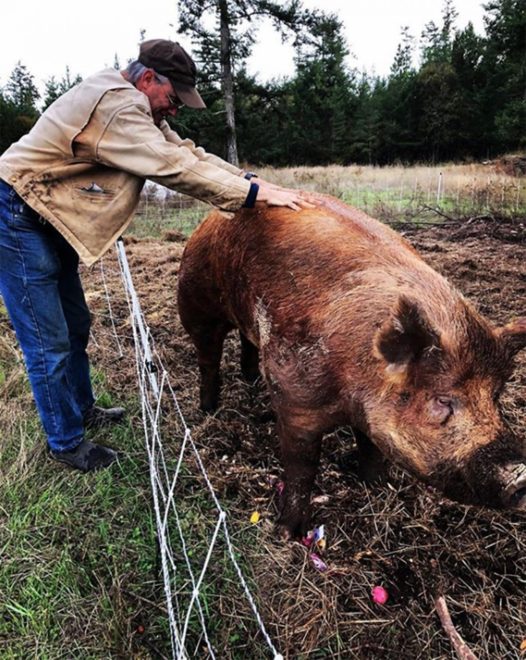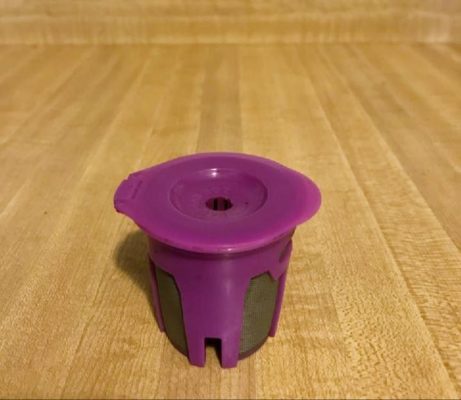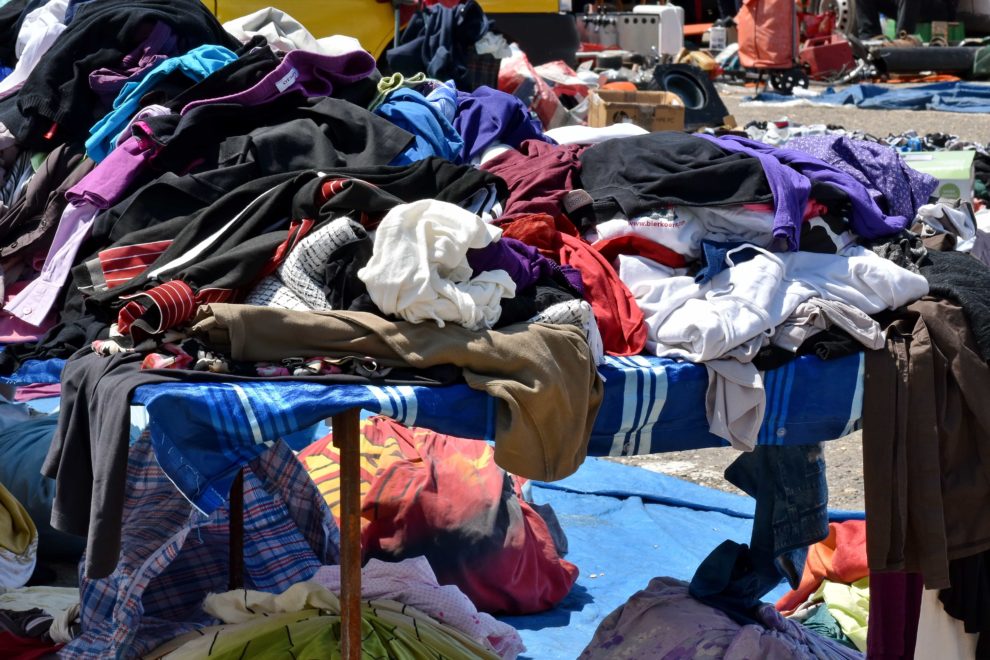By Rachel Ratliff
In our last blog, we discussed how to reuse plastics to lessen our reliance on the recycling process; in this blog, we’ll be making a case for using less. That’s all good, but there are only so many plastic bottle planters a person can have in their homes before they go bonkers. If we want to keep waste out of landfills and our lakes, and we are totally over arts and crafts, perhaps we should slow our waste creation! That’s right, we’re talking about ways to reduce our overall consumption. We have resources and tips for those who want to use less while still doing the things they love. In this blog, we’re making a case for using less.
Let’s reiterate a few things. Recycling is a great way to keep garbage out of landfills and we are certainly not telling you to stop, but we are encouraging you to do it less. Hear us out! Certainly, you remember the three Rs:
Reduce · Reuse · Recycle
Did you know that those are actually a hierarchy? Yeah, recycling is actually the last thing you should be doing to prevent landfill waste. Recycling is a process that allows us to make used resources new again. However, recycling uses quite a bit of energy and more than a few noxious chemicals to make this happen. Sometimes recycled products don’t live up to our standards and end up in a landfill anyway. Check out our previous post for more information about recycling.

Reducing the waste in our landfills is definitely important, but at Inland Seas Education Association we are especially concerned with keeping our Great Lakes healthy and clean! How does waste end up in the Great Lakes? There are numerous ways that waste can end up in a waterway; some waste is intentional (i.e. littering) but many are not. Perhaps you disposed of your waste in the proper container, but it blew away when being loaded onto the recycling truck. Or maybe you had a picnic and a wrapper was swept away by the wind. These unintentional types of waterway waste can be further prevented by reducing how much waste is created. (If you are still littering in the year 2020, come see us. We just want to talk. 😉)
Here’s the real kicker. If garbage in your local inland stream was not already gross, know that it will likely continue its trashy journey to also pollute one of the Great Lakes! Within the Great Lakes Basin, one of the larger lakes is always downstream. Let’s look at some commonly overused resources and how we can reduce our usage of them.
Paper
Paper products like printer paper, cardboard, and napkins are some of the most frequently discarded and recycled items in the United States. According to the Environmental Protection Agency in 2017, the United States used about sixty-seven tons of paper products. Of that huge amount, 69% was recycled and 27% ended up in a landfill. They go even further to say that paper waste made up 13% of landfill waste in 2017! (1) On average, it takes between two and six weeks for paper products to decompose. (2)
Two to six weeks may not seem like a long time, but we need to factor in how much paper we are using. The average American uses about 700 pounds of paper products per year. (3) Do you need a visual? This is Magnus, a 700 pound tamworth pig from Chris Pratt’s farm (yes, that Chris Pratt).

Now imagine if every person in the entire United States had a pig this size! That is a visual representation of how much paper we all use and throw away or recycle each year. Magnus is cute, but the amount of paper we are using is not. Here are some ways to reduce the paper waste we are sending to waste centers.
- Print on both sides of your paper. Take it a step farther and save the file as a pdf on your computer rather than printing.
- Skip the receipt! Most of this information is available digitally. When you’re at the ATM, a gas pump, or in a shop, say no to the receipt.
- Junk mail is so annoying and wasteful! You can stop receiving it in two steps. Find the contact information on the piece of junk mail and give them a ring to be taken off their list.
- Dress up your Taco Tuesday with cloth napkins. Trust us, you will feel so fancy.
- Compost your scraps! A successful compost pile is not complete without some paper materials to keep the flies away. All of your homework from the prior school year makes for a great soil additive.
- Write notes and lists on scrap paper. Instead of using a brand new sheet of paper, use some old paper instead.
Plastic
Didn’t we already talk about reusing plastic in the last blog? Yes indeed, but plastic is the biggest problem in waste management right now. It has an enormous impact on large water bodies like our beloved Great Lakes so we’re talking about it again. Let’s review the basics. Most importantly, because plastic is a synthetic or man-made material it does not ever truly decompose. Instead, it breaks down into smaller and smaller pieces called microplastics. These insidious little plastic pieces are often mistaken by wildlife as food. Plastic also provides a host to some environmentally persistent toxins like PCB (polychlorinated biphenyl). If an animal consumes a contaminated plastic piece, they have now introduced those chemicals into the food web threatening their own health and the health of anything that may eat them.
Because plastic is used in so many places, there are endless opportunities to reduce our use.
- No single-use straws, obviously. Save the turtles.
- Rather than purchasing several individual products, see if you can find one product that does many things. For example, for a perfect dirty chai latte you need an espresso maker and a milk frother. Instead, purchase a coffee machine that does both of those things and makes regular coffee!
 For the love of the lakes, stop using disposable coffee pods. Reusable ones are so incredibly cheap and better for our environment. Pictured is a reusable coffee pod made of durable plastic. Stainless steel coffee pods are also available and are much more versatile.
For the love of the lakes, stop using disposable coffee pods. Reusable ones are so incredibly cheap and better for our environment. Pictured is a reusable coffee pod made of durable plastic. Stainless steel coffee pods are also available and are much more versatile. - Reusable shopping bags are a fun way to express your environmental self. Try upping your game with reusable produce bags! Did you know that you do not need to put only one type of produce in each bag? You can cram as many fruits and veggies in there as you can fit as long as you scan them individually. (We do not advocate vegetable theft!)
- Buy in bulk! So many grocery items come individually wrapped. Find a local shopping center that offers bulk sales.
- Purchase from a local farmer’s market. It is not only a fun weekend activity, but you are skipping huge amounts of plastic altogether!
Fabric
Oh yes, we’re talking about clothing! Have you ever heard the term “fast-fashion?” It’s a relatively recent trend in manufacturing where big-name brands (think Zara, Forever 21, and H&M) keep an eye on what is trendy and throw together quick garments to get on racks ASAP. The result is lots of junky clothing that falls apart easily. People throw away a surprising amount of clothing here in the United States. As reported by the EPA in 2017, we discarded 16.9 million tons of fabric waste. That made up over 6% of municipal waste in the landfill that year. (4) (It is worth noting that some of this number is made up of furniture and carpet, but the EPA acknowledges that much of this figure is discarded clothing.)

To add insult to injury, many of these clothing items are made from polyester and nylon which are plastic! With each wash, these materials shed small plastic fibers that are difficult to catch in today’s water treatment systems and eventually they end up in our Great Lakes. (5)
Here are some ways to reduce your textile waste and up your fashion game overall.
- Purchase clothing secondhand. Purchasing used garments does not have to be drab. Seek out online secondhand retailers like Poshmark and ThredUp, and check Facebook Marketplace for some major scores. Local areas usually have consignment boutiques or upscale thrift shops. Most importantly, keep an eye out for organic materials like cotton and wool.
- Find companies that are operating with a closed loop. This means that they will take back older clothes that you have purchased from them to recycle properly, and then give you a discount on new items. A successful example of this is For Days though there are other smaller retailers like this.
- Host swap parties with your friends! If you think the people around you have good taste, invite them over to trade some of the pieces they are tired of wearing for things you are tired of wearing. This is a fun way to revamp your closet for free!
If you are reading the Inland Seas Education Association blog, likely, you are already fairly conscious of your environmental impact. We are grateful you are looking to us as a leader in Great Lakes protection. In turn we look to you, individual citizens, for environmental action. Reducing our waste output is necessary in fighting Great Lakes pollution and we hope you found some inspiration here. Please reach out if you have your own ideas or found success with one of ours! Thank you for being a part of this conversation and our community as we are making the case for using less.
References:
- LeBlanc, R. (2019, October 22). How Long Will It Take That Bag of Trash to Decompose in a Landfill? Retrieved from https://www.thebalancesmb.com/how-long-does-it-take-garbage-to-decompose-2878033.
- Paper and Paperboard: Material-Specific Data. (2019, November 13). Retrieved from https://www.epa.gov/facts-and-figures-about-materials-waste-and-recycling/paper-and-paperboard-material-specific-data.
- Upstate Medical University (2016, August). Paper, Paper, Paper, Paper, Paper, Paper, Paper, PAPER… TOO MUCH PAPER! Think Green News. Retrieved from https://www.upstate.edu/green/pdf/tg-news/tg-news-summer-2016.pdf.
- Textiles: Material-Specific Data. (2019, October 30). Retrieved from https://www.epa.gov/facts-and-figures-about-materials-waste-and-recycling/textiles-material-specific-data.
- Hartline, N. L., Bruce, N. J., Karba, S. N., Ruff, E. O., Sonar, S. U., & Holden, P. A. (2016). Microfiber Masses Recovered from Conventional Machine Washing of New or Aged Garments. Environmental Science & Technology, 50(21), 11532–11538. doi: 10.1021/acs.est.6b03045.
- Pratt, Chris [@prattprattpratt] (2019, April 25). [Photo of his giant Tamworth pig]. Retrieved from https://www.instagram.com/prattprattpratt/p/BwtFbXLJdG1.
This blog, Making a Case for Using Less, was written by Rachel Ratliff, an educator for Inland Seas Education Association. Rachel obtained her degree in natural resource management with a minor in biology from Grand Valley State University. She first began her journey with ISEA as an education intern in the summer of 2018 and has a passion for experiential education as well as public outreach and communication.
Inland Seas Education Association (ISEA) is a nonprofit organization whose mission is to inspire Great Lakes curiosity, stewardship and passion. Through hands-on, experiential learning activities, people of all ages gain an appreciation for and personal connection to our lakes, leading to a desire to care for and protect them. For more information about our Schoolship programs, data, or public sails, please visit www.schoolship.org.